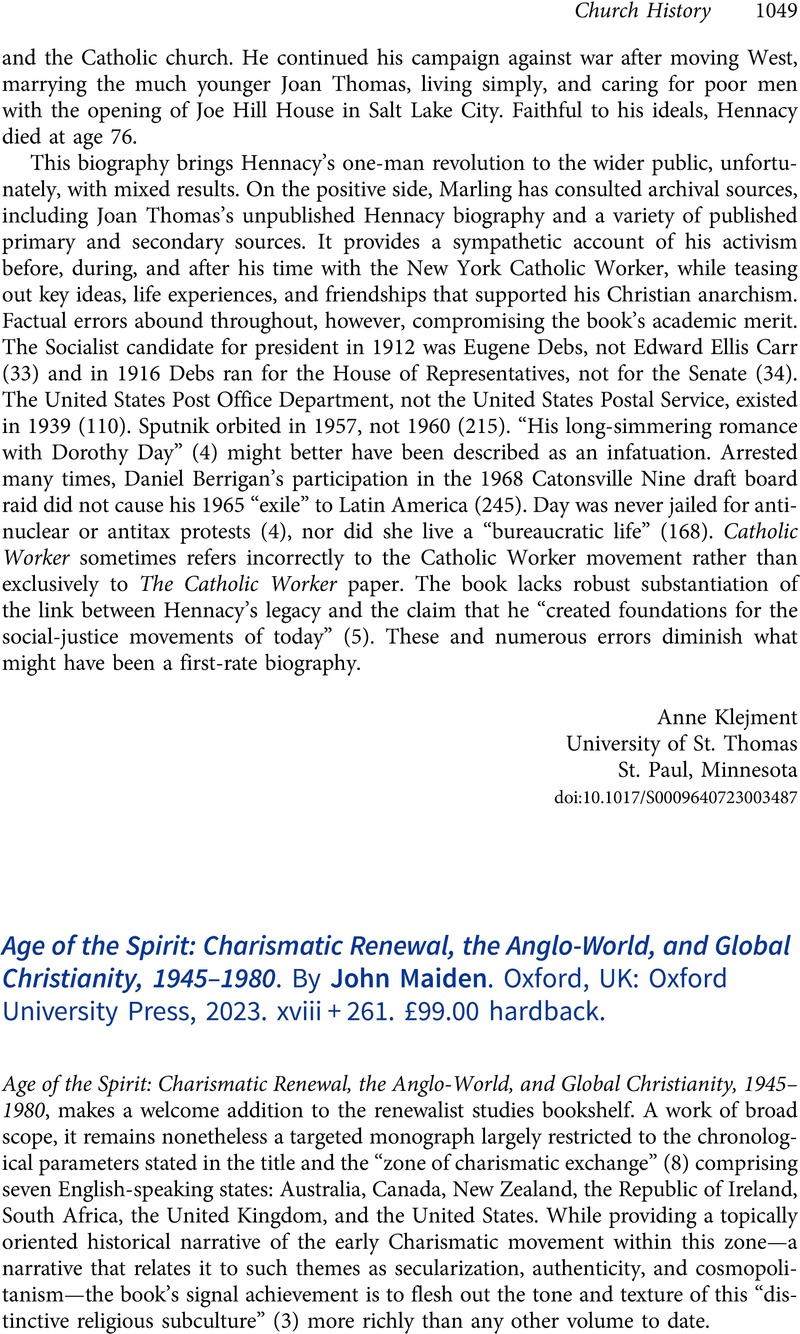No CrossRef data available.
Article contents
Age of the Spirit: Charismatic Renewal, the Anglo-World, and Global Christianity, 1945–1980. By John Maiden. Oxford, UK: Oxford University Press, 2023. xviii + 261. £99.00 hardback.
Review products
Age of the Spirit: Charismatic Renewal, the Anglo-World, and Global Christianity, 1945–1980. By John Maiden. Oxford, UK: Oxford University Press, 2023. xviii + 261. £99.00 hardback.
Published online by Cambridge University Press: 19 March 2024
Abstract
An abstract is not available for this content so a preview has been provided. Please use the Get access link above for information on how to access this content.

- Type
- Book Reviews and Notes
- Information
- Copyright
- Copyright © The Author(s), 2024. Published by Cambridge University Press on behalf of American Society of Church History


